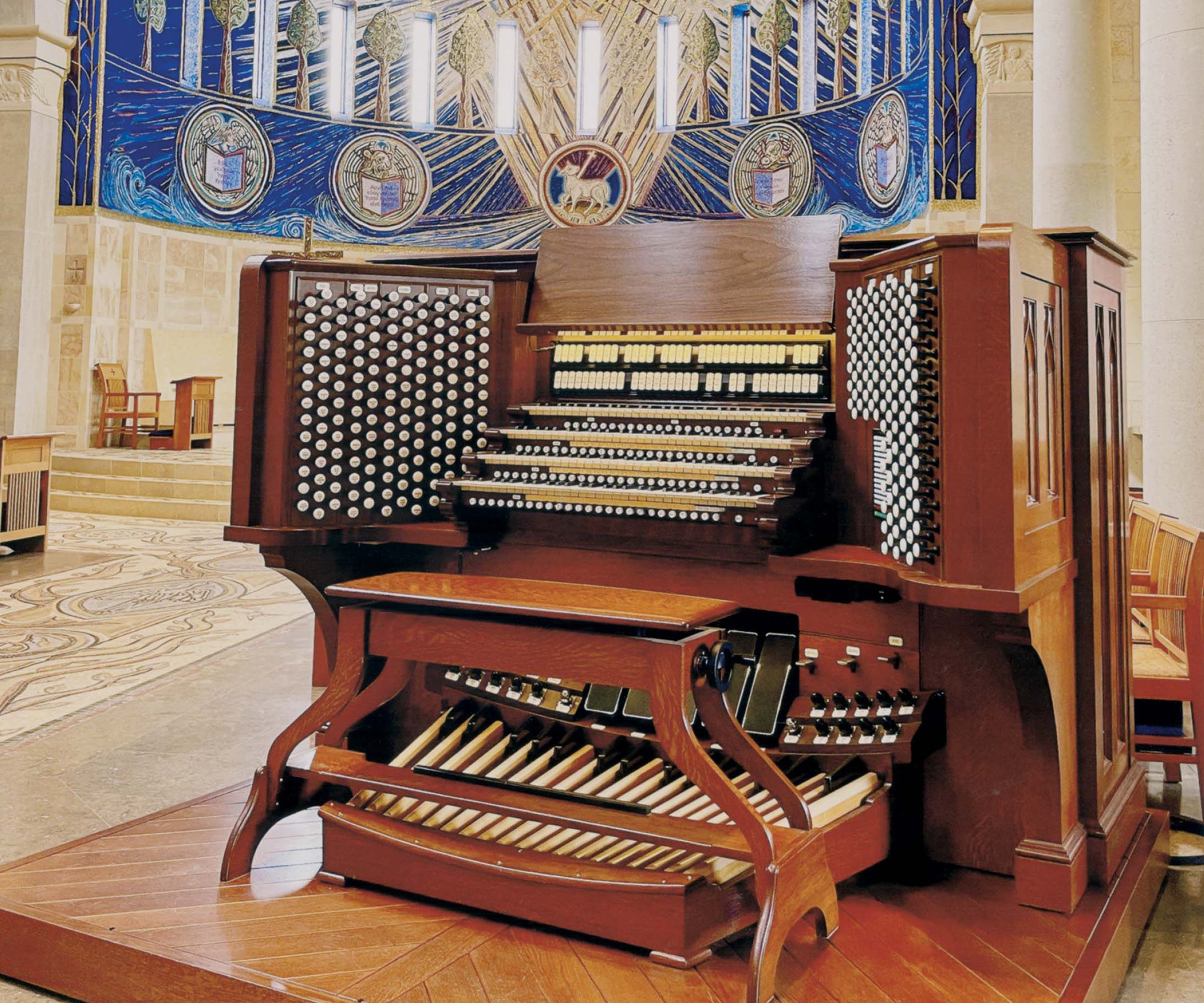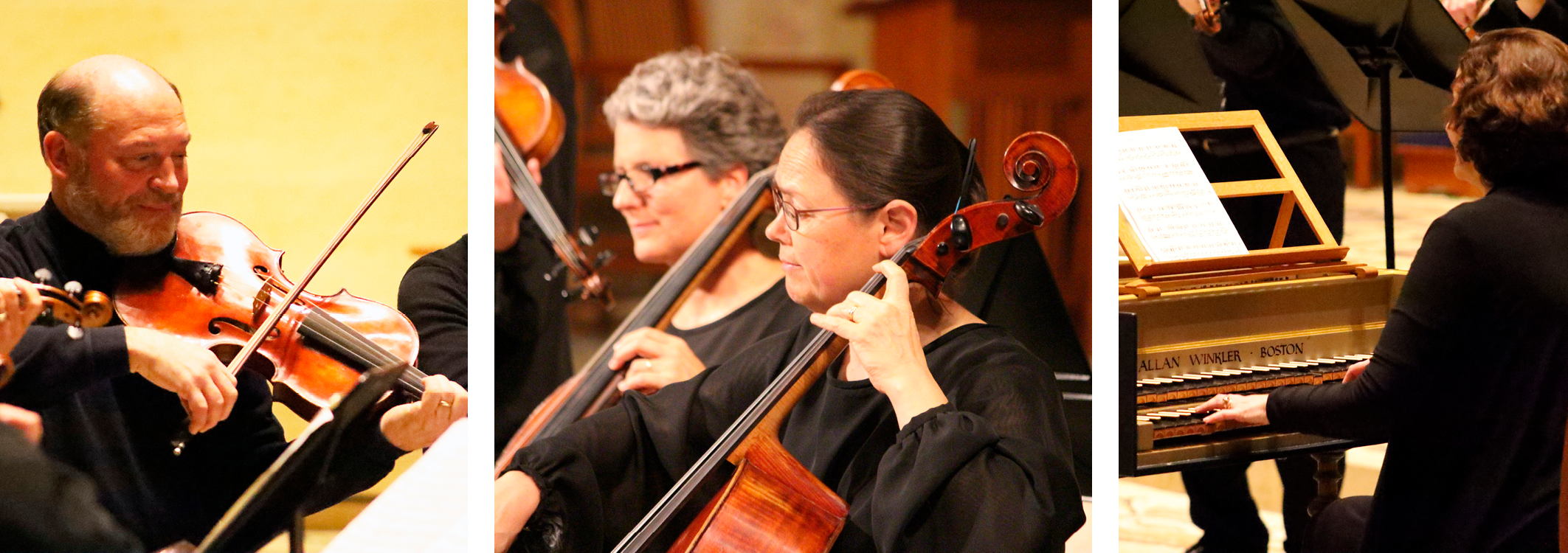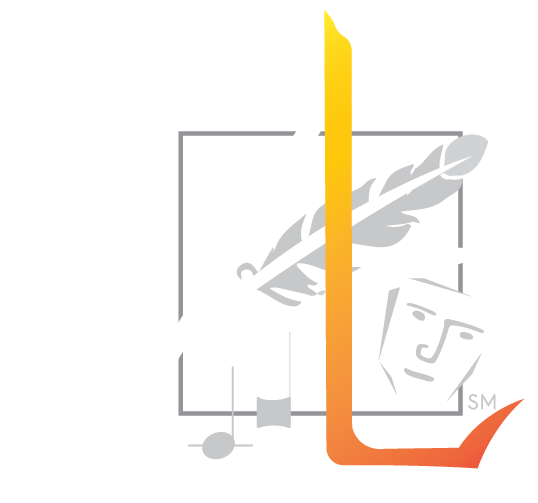
Saturday, May 6th, 7:30 PM
Symphony No. 3 in C Major, William Boyce
I. Allegro
II. Vivace
III. Minuetto-Allegro
Quartet in G Major (Tafelmusik), Georg Philipp Telemann
Largo/Allegro/Largo
Partita No. 6 for Harpsichord, J.S. Bach
I. Toccata
Sinfonie in A Major, Giovanni Battista Sammartini
I. Presto
II. Andante
III. Presto assai
– Intermission –
Sonata à 2. Violino è Fagotto, Johann Michael Nicolai
Canon for 2 Cellos, Domenico Gabrielli
Concerto in A minor, Antonio Vivaldi
I. Allegro
II. Largo
III. Allegro
William Boyce, a London native born in 1711, composed for both the church and theatre. An accomplished organist and choir master, he is regarded as one of the most notable English representatives of the Baroque style. Later in life, after having gone deaf, he devoted time to editing and publishing the first collection of church music in England, known as Cathedral Music. This did much to preserve English choral works dating back more than two centuries which might otherwise have been lost.
His Symphony No. 3 in C Major is part of his collection of eight symphonies published in 1760. Symphony No. 3 is also known as “The Chaplet,” having been taken from a two-act production of the same name. While most of these symphonies follow the Italian overture form (which typically has a fast movement, a slow movement, and ends with a fast movement); in this Symphony Boyce opted to put the fast movement in the middle. His symphonies are typically characterized by a relatively simple style, yet his ability to infuse them with life and vitality make them highlights in Baroque literature in the present day.
In the beginning God created the heavens and the earth. Genesis 1:1
In his long and prolific career, German composer Georg Philipp Telemann (1681-1767) wrote many works in varied styles and varied groupings of instruments and voice from the late Baroque age up to the time of Haydn. Telemann was born in Magdeburg, educated in Leipzig, and spent most of his energetic and creative life in Hamburg where he was director of music for the five city churches.
Tafelmusik, or “table-music,” is a Baroque style of music written for 16th century European court banquets. Perhaps the most well-known in the genre is this by Telemann published in 1733—a collection of 18 pieces presented in three volumes, each with six parts: an overturesuite, followed by a quartet, a concerto, a trio, a solo, and a “conclusion.”
This collection is one of Telemann’s best-known compositions. He wrote it as a work to teach instrumental performance, specifically offering something for the enjoyment of every player with parts “suited for each instrument.” The Quartet in G Major is the second part of the first volume of Telemann’s Tafelmusik. You will hear the grace and joy of his rich melodies passed from player to player.
See, I will create new heavens and a new earth. The former things will not be remembered, nor will they come to mind. Isaiah 65:17
J.S. Bach composed six Partitas for solo harpsichord between 1725 and 1730 that are considered to be his most technically demanding works for the instrument. Each partita begins with a movement in either an overture, toccata, or fantasia form that serves as an introduction to the suite of dance movements that follows.
Bach’s love of playing the instrument, coupled with his delight in discovering and employing Buxtehude’s free compositional style with his mastery of counterpoint, led him to create harpsichord works of unparalleled beauty and flair.
Again, the kingdom of heaven is like a merchant looking for fine pearls. When he found one of great value, he went away and sold everything he had and bought it. Matthew 13:45-46
Giovanni Battista Sammartini was born in 1695 in Milan, the seventh of eight children. His father was a French emigrant and oboist. He became a prolific composer, violinist, organist, choirmaster, and teacher.
Although overshadowed in history by more famous 18th century composers such as J.S. Bach, Handel, and Vivaldi, Sammartini had a profound impact on the development of the symphony, establishing it as an art form in its own right. He was the first to write his symphonies using the sonata form, shifting the symphony from a light, formulaic “filler” piece usually played before an opera, into a serious musical form that foreshadowed the classical era. Sammartini’s great rival, Czech composer Josef Myslivecek, considered Sammartini to be “the father of Haydn’s style.” Much of Sammartini’s work was lost during the French occupation of Milan; his scores ended up in Paris and Vienna, and many were destroyed during the Second World War. Fortunately, his works were rediscovered in 1913 by Italian researchers.
Sinfonie in A Major was written during Sammartini’s most significant and innovative period of composing. His symphonies are elegant, transparent, and beautifully harmonic works, with driving rhythm.
Most, like the one that you will hear today, are written in three movements: a fast sonata, followed by an emotional, slow lyrical movement, and completed by a fast sonata or minuet.
The kingdom of heaven is like a mustard seed, which a man took and planted in his field. Though it is the smallest of all seeds, yet when it grows, it is the largest of garden plants and becomes a tree, so that the
birds come and perch in its branches. Matthew 13:31-32
Following the brutal 30-Years War in which Germany experienced population declines of over 50 percent, the German ducal courts found themselves with money to dedicate to the arts which restore the spirit. The nobility turned to the new Italian Baroque style, sending musicians to study with Italian masters. By the mid-17th century German composers were adapting the new style to their own culture.
Johann Michael Nicolai began his career in the central-German area of Thuringia, at the court of Saxe-Lauenburg, and moved south to the court of Stuttgart when he was 26. He was a violinist and composer, known for favoring lower instruments such as the bass viol and bassoon. His Sonata à 2 for violin and bassoon is a good example of his synthesis of the Baroque style. The penultimate movement is a rustic peasant dance in the Bergamasca form.
But seek his kingdom, and these things will be given to you as well. Do not be afraid, little flock, for your Father has been pleased to give you the kingdom. Luke 12:31-32
Italian composer, Domenico Gabrielli, was born in Bologna in the 1650’s. During his short life, he became widely known for his vocal compositions which included cantatas, oratorios, religious works, serenatas, and operas.
He was an accomplished cellist as well: he was a pioneer of solo playing, one of Italy’s first traveling cello performers, and wrote some of the earliest known works for unaccompanied cello. Gabrielli held prominent positions in both the Accademia Filarmonica (a Bologna music society that would later gain prestige throughout Europe) and the Orchestra at San Petronio, one of the city’s most important musical groups. During Gabrielli’s era Bologna invented the wire-wound string, which would change the course of string playing forever.
Let your light shine before others, that they may see your good deeds and glorify your Father in heaven. Matthew 5:16
Antonio Vivaldi was born on March 4, 1678, to a poor family in Venice, Italy. His father, Giovanni Battista, was a violinist at the Basilica of St. Mark, and was likely Vivaldi’s primary music teacher.
In 1703, Vivaldi took the position as violin master at the Ospedale della Pieta, a charitable orphanage for girls. Due to the girls’ high level of talent and accomplishment, Vivaldi was able to compose impressive, difficult pieces for them, and it was in this position that he developed his popular concerto form.
The Violin Concerto in A minor was one of a collection of 12 concerti for solo violins and chamber orchestra. In typical fashion, Vivaldi’s fast movements are vivacious and filled with melodic verve. The middle Largo movement begins and ends with the full orchestra in simple octaves, while the soloist’s melodic line is gently enfolded in the middle. In the finale, orchestra and soloists work closely together with two themes in ritornello form.
Look! God’s dwelling place is now among the people, and he will dwell with them. They will be his people, and God himself will be with them and be their God. He will wipe every tear from their eyes. There will be no more death or mourning or crying or pain, for the old order of things has passed away. Revelation 21:3-4
Upcoming Events

Gloriæ Dei Cantores Ascension Concert
May 19 & 20, 2023, 7:30 PM
Also livestreamed on May 20
Church of the Transfiguration
Rock Harbor, Orleans, MA

ORGANIST MARILYN KEISER IN CONCERT
June 3, 2023, 7:30 PM
St. Cecilia Organ
Church of the Transfiguration
Rock Harbor, Orleans, MA
View All Upcoming Events!

